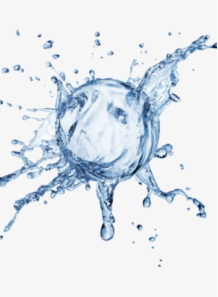Hyaluronic Acid (Japan)
- Product Code: 6309
ไฮยาลูรอนิค แอซิด จากญี่ปุ่น ที่ถูกนำไปใช้ผลิต เจล ไฮยาลูรอน ที่จำหน่ายอย่างแพร่หลาย ในประเทศญี่ปุ่น มีคุณลักษณะและให้ความรู้สึกผิว ที่แตกต่างไปจาก Hyaluron ที่ผลิตจากประเทศอื่นๆ เนื่องจาก มีกระบวนการผลิตที่แตกต่างจากประเทศอื่นๆ และสามารถละลายน้ำได้ง่าย
ไฮยาลูรอนิค แอซิด จากญี่ปุ่น ที่ถูกนำไปใช้ผลิต เจล ไฮยาลูรอน ที่จำหน่ายอย่างแพร่หลาย ในประเทศญี่ปุ่น มีคุณลักษณะและให้ความรู้สึกผิว ที่แตกต่างไปจาก Hyaluron ที่ผลิตจากประเทศอื่นๆ เนื่องจาก มีกระบวนการผลิตที่แตกต่างจากประเทศอื่นๆ และสามารถละลายน้ำได้ง่าย
Hyaluronic Acid ไฮยาลูรอนิค แอซิด จากญี่ปุ่น ที่ถูกนำไปใช้ผลิต เจล ไฮยาลูรอน ที่จำหน่ายอย่างแพร่หลาย ในประเทศญี่ปุ่น มีคุณลักษณะและให้ความรู้สึกผิว ที่แตกต่างไปจาก Hyaluron ที่ผลิตจากประเทศอื่นๆ เนื่องจาก มีกระบวนการผลิตที่แตกต่างจากประเทศอื่นๆ
Hyaluronic Acid ที่ผลิตจากญี่ปุ่นชนิดนี้ เกิดจากการบ่ม ของแบคทีเรีย streptococcus zooepidemicus จึงให้ผิวสัมผัสลักษณะพิเศษนี้
* Hyaluronic Acid ที่ผลิตจากญี่ปุ่นชนิดนี้ สามารถละลายน้ำได้ง่ายกว่า Hyaluronic ที่มาจากประเทศอื่นๆ (สามารถคนด้วยมือจนละลายใสได้ โดยหากคนด้วยมือ จะใช้เวลาคนประมาณ 15นาที)
* Hyaluronic Acid ที่ผลิตจากญี่ปุ่นชนิดนี้ มีค่า pH ช่วงแคบ อยู่ที่ 6-7 เมื่อเทียบกับชนิดอื่นๆที่มี pH กว้างกว่านี้
* Hyaluronic Acid ที่ผลิตจากญี่ปุ่นชนิดนี้ ได้รับมาตรฐาน JSQI (Japanese Standard of Quasi-Drug Ingredients)
* Hyaluronic Acid ที่ผลิตจากญี่ปุ่นชนิดนี้ ให้เนื้อเจลที่ใสมากเป็นพิเศษ (transmission > 98%)
* ขนาดของโมเลกุลจะอยู่ในช่วงกว้าง โดยเป็นการผสมผสานหลากหลายขนาดโมเลกุลเพื่อให้ออกฤทธิ์ต่อผิวได้ทุกชั้น
บริษัทมีจำหน่าย Hyaluronic Acid 12ชนิด
1. ขนาด Small (Molecular Weight: เฉลี่ย 10,000 Daltons) สามารถดูดซึมเข้าสู่ผิวได้ ให้ความชุ่มชื้นผิวในระดับลึก แต่ไม่ก่อให้เกิดเนื้อเจล และไม่สามารถเคลือบผิวได้
2. ขนาด Standard (Molecular Weight: เฉลี่ย 1,000,000 Daltons) ไม่สามารถดูดซึมเข้าสู่ผิวได้ ให้ความชุ่มชื้นบริเวณผิวหนังชั้นนอก ก่อให้เกิดเจลได้เล็กน้อย เคลือบผิวได้เล็กน้อย
3. ขนาด Large (Molecular Weight: เฉลี่ย 2,000,000 Daltons) ไม่สามารถดูดซึมเข้าสู่ผิวได้ ให้ความชุ่มชื้นบริเวณผิวหนังชั้นนอก ก่อให้เกิดเจลได้ดี เคลือบผิวได้ดี
4. ชนิดเหลว Double Hyaluronic Acid เกิดจากการผสมระหว่าง ขนาด Nano และขนาด Standard ใช้งานได้ง่าย และสามารถให้ความชุ่มชื้นได้ทั้งผิวชั้นล่าง และผิวชั้นบน
5. ชนิดผง Cationic ผ่านกระบวนการทำให้เกิดประจุบวก สามารถเกาะอยู่บนผิว หรือเส้นผม ได้ สามารถใช้ในสูตรล้างออก เช่นน้ำยาล้างหน้า แชมพู คอนดิชั่นเนอร์
6. ชนิด Elastomer เนื้อเจล ด้วยลักษณะการเชื่อมโยงกันของแต่ละโมเลกุลที่มีขนาดใหญ่ ทำให้มีประสิทธิภาพการกักเก็บความชุ่มชื้น ได้มาก และยาวนาน
7. ชนิด Japan เกรดเดียวกับที่ใช้ในผลิตภัณฑ์ Hyaluron Serum ที่จำหน่ายส่วนใหญ่ในประเทศญี่ปุ่น
8. ชนิด 4D Hyaluron เป็นเนื้อเจลข้น ประกอบด้วย ไฮยาลูรอน 3 ขนาดโมเลกุล และ ไฮยาลูรอน ชนิดประจุบวก จึงสามารถบำรุงผิวได้อย่างสมบูรณ์ ทั้งชั้นนอกจนไปถึงชั้นใน
9. ชนิด 8D Hyaluron เป็นเนื้อเจล ประกอบด้วย ไฮยาลูรอน 4 ขนาดโมเลกุล และ ไฮยาลูรอน ชนิดประจุบวก และ ไฮยาลูรอน ชนิดครอสลิเมอร์ และ ไฮยาลูรอน ชนิด acetylated (หรือเรียกว่า super-hyaluron)
10. ชนิด acetylated (หรือเรียกว่า super-hyaluron) มีความสามารถในการดูดซึมเข้าสู่ผิวได้สูงสุด เมื่อเทียบกับ Hyaluron ชนิดอื่นๆ
11. ชนิดกระจายตัวในน้ำมัน (oil-dispersible) สามารถผสมในสูตร oil-based เช่น ลิปสติก ลิปบาล์ม และผลิตภัณฑ์ make-up ส่วนใหญ่เนื่องจากเป็น oil-based ได้
12. ชนิด China เป็นเกรดที่เน้นประหยัดต้นทุนสูตร ราคาประหยัด โดยมีคุณภาพมาตรฐาน
การใช้: สำหรับเครื่องสำอางค์ทุกชนิด อยู่ในรูปของเจล เซรั่ม โลชั่น หรือ ครีม
วิธีการผสม: ละลายในน้ำที่อุณหภูมิห้อง ปั่นประมาณ 15นาที
อัตราการใช้: เครื่องสำอางค์ 0.1-1.0% (กรุณาศึกษาอัตราการใช้เพิ่มเติมด้านบน)
ลักษณะผลิตภัณฑ์: ผงสีขาว
การละลาย: สามารถละลายในน้ำ
การเก็บรักษา: หากต้องการเก็บในระยะยาว เก็บในที่แห้งและเย็น ห้ามโดนแสงแดดและความชื้น
INCI Name: Sodium Hyaluronate
| Mechanism | - |
| Appearance | - |
| Longevity | - |
| Strength | - |
| Storage | - |
| Shelf Life | - |
| Allergen(s) | - |
| Dosage (Range) | - |
| Recommended Dosage | - |
| Dosage (Per Day) | - |
| Recommended Dosage (Per Day) | - |
| Mix Method | - |
| Heat Resistance | - |
| Stable in pH range | - |
| Solubility | - |
| Product Types | - |
| INCI | - |
Purchase History for
ตะกร้า
ไม่มีสินค้า



